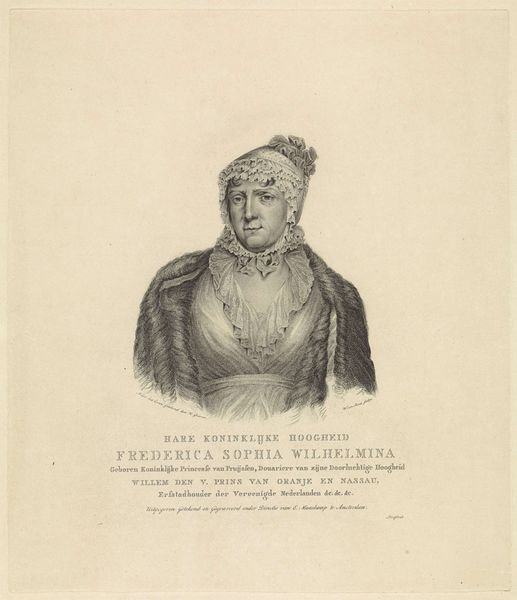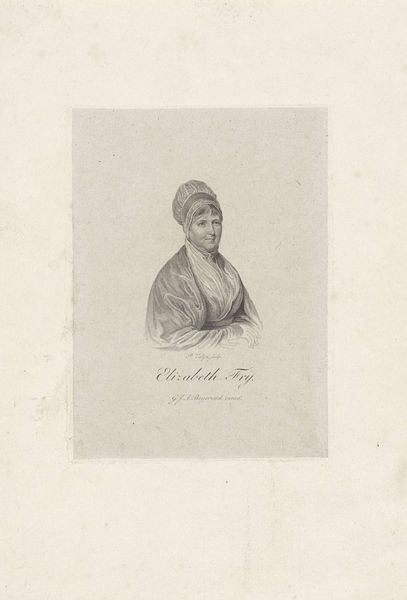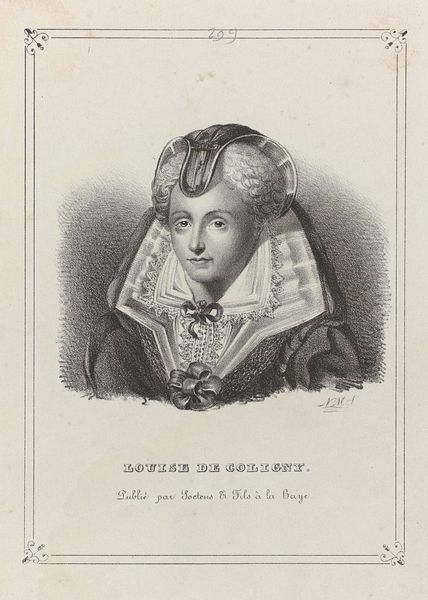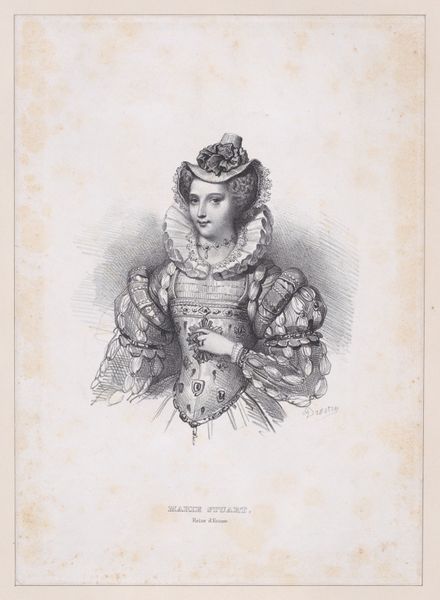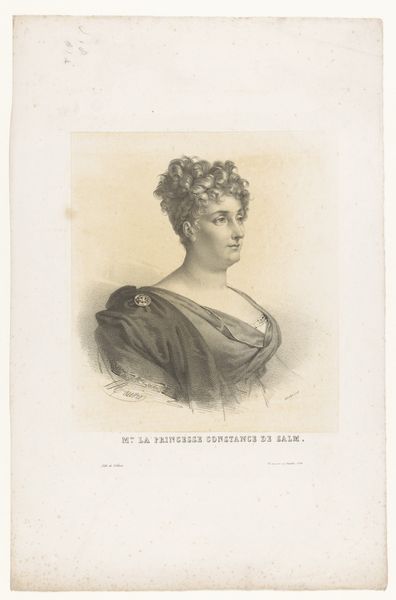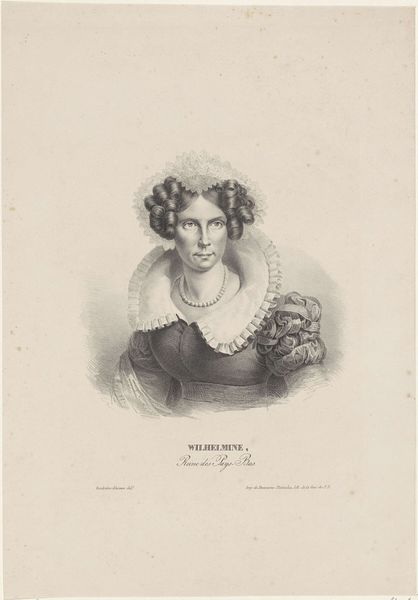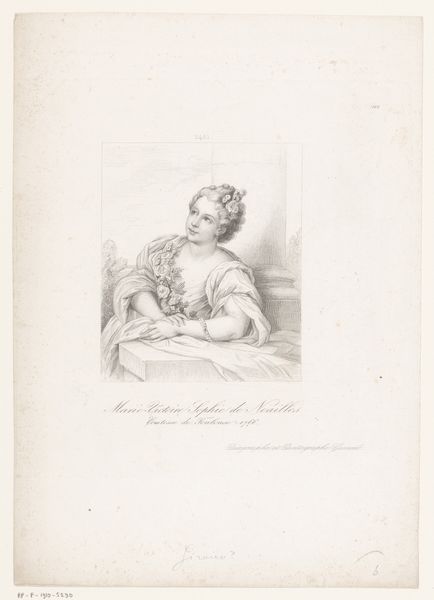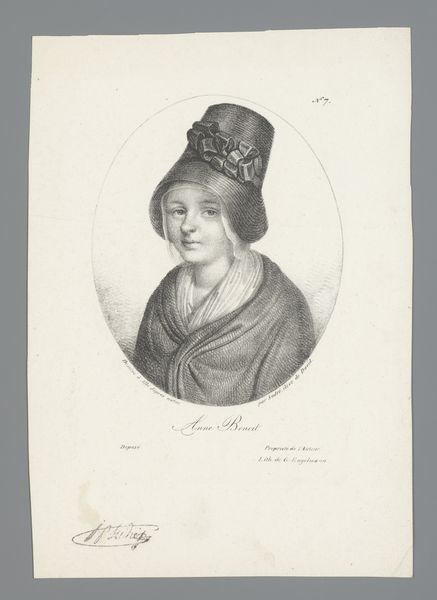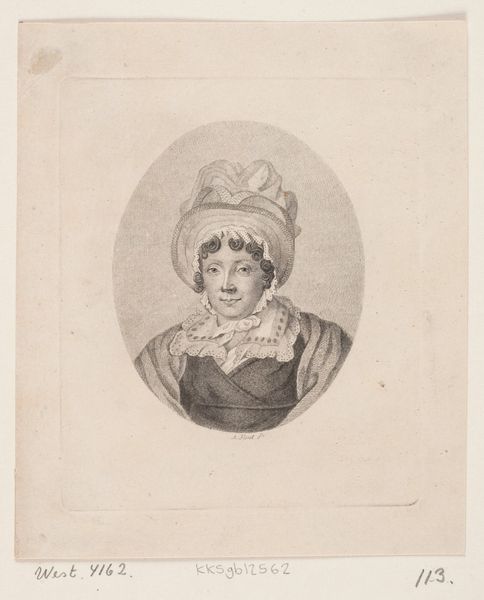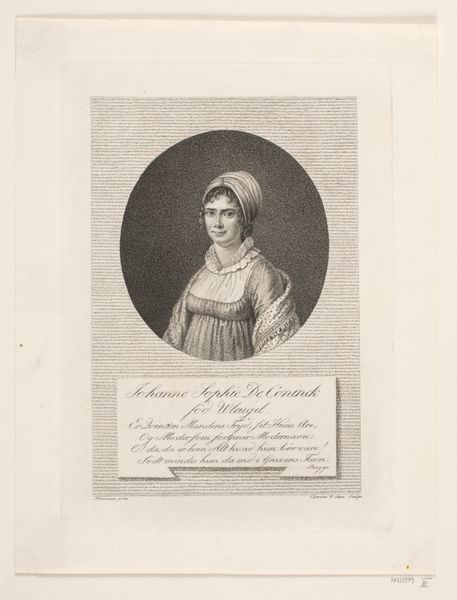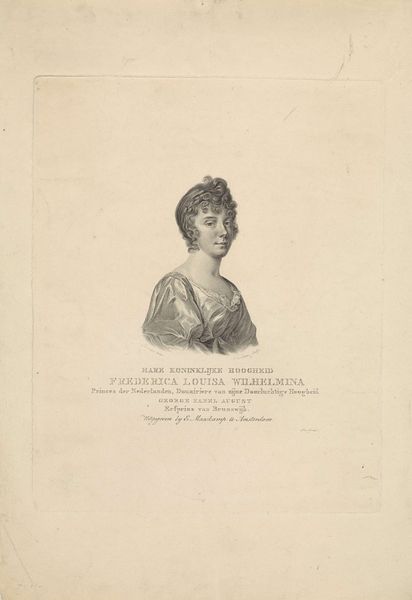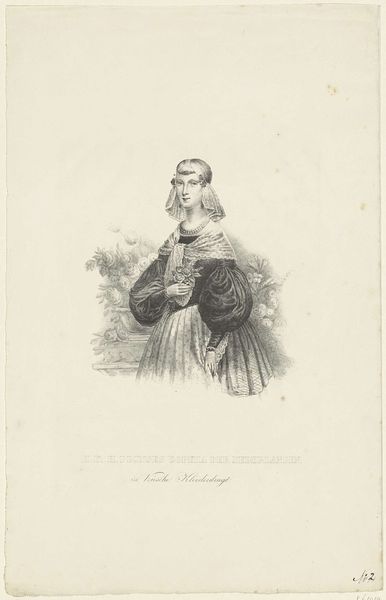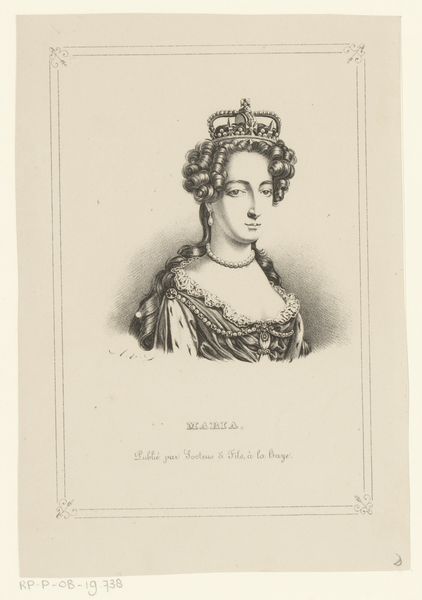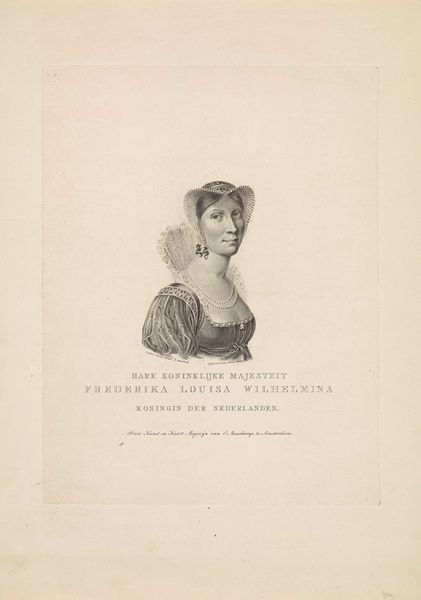
drawing, print, pencil
#
portrait
#
drawing
#
neoclacissism
# print
#
pencil sketch
#
pencil
#
academic-art
Dimensions: height 220 mm, width 156 mm
Copyright: Rijks Museum: Open Domain
Editor: This is a portrait of Wilhelmina van Pruisen, a pencil and print work made around 1838 by Gerhardus Fredericus Eilbracht. I’m struck by the stillness of her gaze, and the detailed rendering of her garments. What stands out to you? Curator: What intrigues me most is the symbolism embedded in the choice of dress and the framing of the figure. Look at the neoclassical lines of her gown, for instance. Doesn't it evoke a deliberate connection to classical virtues and perhaps a commentary on her role within the societal structure? Editor: That's a fascinating point! I was focusing on the surface details. Are you suggesting the artist used clothing to represent ideals? Curator: Precisely. Clothing often acts as a visual signifier. Consider her headwear too; it speaks to a certain status but also perhaps hints at humility or piety, depending on how it's interpreted within the visual language of that era. Notice the deliberate use of the frame— a delicate ornamental choice to emphasize the image and the character. Editor: It's interesting how you interpret the headwear as potentially signalling piety. To me, the ruffles feel almost flamboyant. Curator: And there lies the beautiful ambiguity inherent in iconography. It is the push and pull between what is overtly displayed and the subtle, often contradictory, undercurrents of meaning. These subtle details enrich and deepen our understanding. Editor: I see what you mean! The way you broke down the elements to examine cultural significance makes me appreciate this portrait more. Curator: Indeed! It is a constant negotiation between what the artist intended, what society expected, and how we, as contemporary viewers, decode these symbols. Editor: I'll never look at portraits the same way again!
Comments
No comments
Be the first to comment and join the conversation on the ultimate creative platform.
